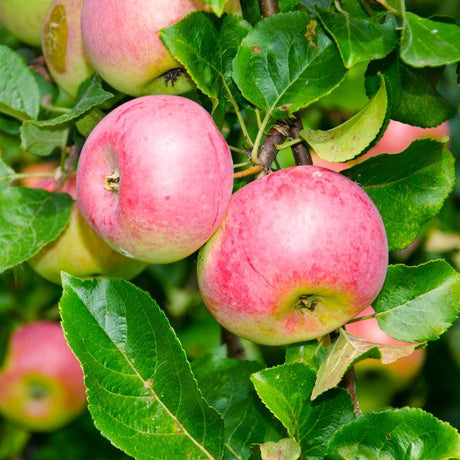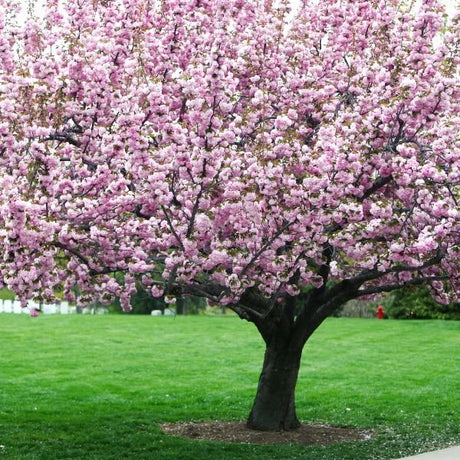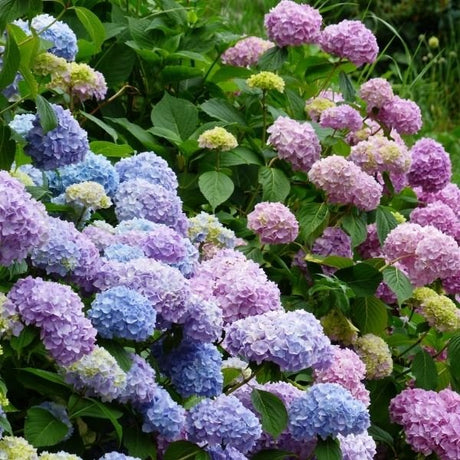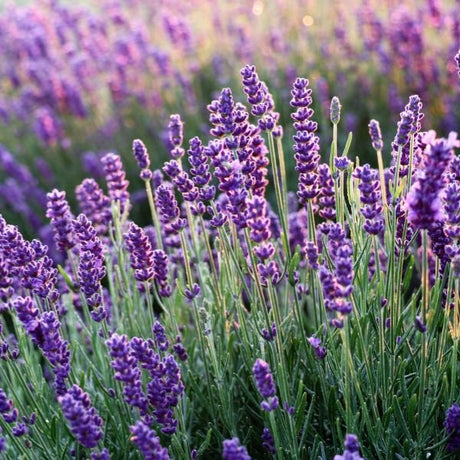Anna Apple Tree
Malus 'Anna'
- Stay Protected with Plant Sentry ™
Anna Apple Tree - 4x4x10 Inch Container is backordered and will ship as soon as it is back in stock.
Plant Sentry™
Plant Sentry™

Plant Sentry™ Protected
Your order is protected by our compliance system that:
- Prevents restricted plants from shipping to your state
- Ensures plants meet your state's agricultural requirements
- Protects gardens from invasive pests and diseases
Delivery and Shipping
Delivery and Shipping
Delivery and Shipping
Fast, Safe Plant Delivery
Ships in 3-4 business days • Tracking provided • Weather protected
| Under $50 | $9.99 |
| $50 - $99.99 | $14.99 |
| $100 - $149.99 | $16.99 |
| $150+ | $24.99 |
✓ Zone-specific timing • ✓ Professional packaging • ✓ Health guarantee
Understanding Plant Options
Nature Hills offers plants in two main formats:
- Container Plants: Grown in pots with soil, sized by container volume and plant age
- Bare Root Plants: Dormant plants without soil, sized by height measurements
Container Plant Sizes
Container sizes indicate plant age and growing capacity rather than liquid volume equivalents. Our containers follow industry-standard nursery "trade gallon" specifications, which differ from standard liquid gallon measurements.
Young Plants (6 months to 18 months old)
| Container Size | Actual Volume | Metric Equivalent |
|---|---|---|
| 2" x 2" x 3" | 0.18 - 0.21 dry quarts | 0.20 - 0.23 dry liters |
| 4" Container | 0.31 - 0.87 dry quarts | 0.35 - 0.96 dry liters |
| 4.5" Container | 0.65 dry quarts | 0.72 dry liters |
| 6" Container | 1.4 dry quarts | 1.59 dry liters |
| 1 Quart | 1 dry quart | 1.1 dry liters |
| 5.5" Container | 1.89 dry quarts | 2.08 dry liters |
Established Plants (18 months to 2.5 years old)
| Container Size | Actual Volume | Metric Equivalent |
|---|---|---|
| 2 Quart | 2 dry quarts | 2.2 dry liters |
| #1 Container | 2.26 - 3.73 dry quarts | 2.49 - 4.11 dry liters |
| 5" x 5" x 12" | 3.5 - 4.3 dry quarts | 3.85 - 4.74 dry liters |
Mature Plants (2-4 years old)
| Container Size | Actual Volume | Metric Equivalent |
|---|---|---|
| #2 Container | 1.19 - 1.76 dry gallons | 5.24 - 7.75 dry liters |
| #3 Container | 2.15 - 2.76 dry gallons | 8.14 - 12.16 dry liters |
Large Plants (3-5 years old)
| Container Size | Actual Volume | Metric Equivalent |
|---|---|---|
| #5 Container | 2.92 - 4.62 dry gallons | 12.86 - 20.35 dry liters |
| #6 Container | 5.25 - 6.01 dry gallons | 23.12 - 26.42 dry liters |
| #7 Container | 5.98 - 6.53 dry gallons | 26.34 - 28.76 dry liters |
Bare Root Plants
Bare root plants are sold by height from the root system to the top of the plant. Plants may exceed minimum height requirements.
Common Sizes:
- Trees: 1 foot, 2 feet, 3 feet, 4 feet, 5 feet, 6 feet
- Shrubs & Perennials: 1 foot, 18 inches, 2 feet
Important Notes
Container Volume Specifications
- Trade Gallon Standard: Our containers follow industry-standard "trade gallon" specifications established by the American National Standards Institute (ANSI Z60.1) for nursery stock
- Volume Variations: Actual soil volume may vary due to plant root systems and growing medium settlement
- Age Indicators: Container size primarily indicates plant age and maturity rather than liquid volume equivalents
Growing Conditions
- Plant size can vary based on variety and growing conditions
- Container size helps indicate plant maturity and establishment level
- Larger containers generally mean more established root systems and faster landscape establishment
Seasonal Availability
- Bare root plants are available seasonally when dormant
- Container plants are available throughout the growing season
- Specific varieties may have limited availability in certain sizes
Questions?
For questions about specific plant sizes or availability, please contact our plant experts who can help you choose the right size for your landscape needs.
Plant Highlights
Anna Apple Tree highlights at a glance!
Specifications
Specifications
-
Brand
-
Botanical Name
-
Growing Zones
-
Mature Height
-
Mature Spread
-
Sun ExposureFull Sun
-
Moisture
-
Soil
-
Growth RateMedium
-
Flower Color
-
Fall Color
-
Pollinator Friendly
-
Pollinator Required
-
Fragrant
-
Pruning Time
-
Bloom PeriodLate Spring
-
Harvest Time
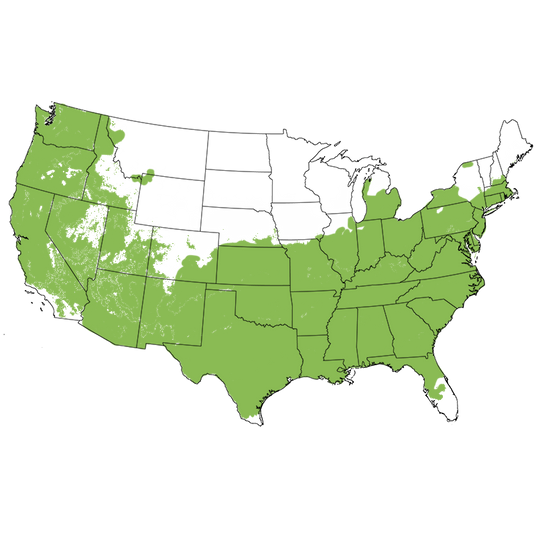
Growing Zones 6-9
Low Chill Anna Apple Tree for South and West
- Very Early Season
- 200 Chill Hours
- Considered Self-Pollinating - Larger Harvest With Suggested Partner Plants
- Sweet & Flavorful
- Great for Fresh Eating, Baking, Cooking & Juicing
- Heavy Crops
- Pretty Yellow Fruit with Red Blush
- Lovely Spring Flowers
Apple-loving homeowners on the West Coast, and in the South need to know about the Anna Apple tree (Malus 'Anna'). Anna requires only 200 hours of chill time, which makes it ideal for warmer climates.
As you know, it's always best to select varieties that do best in your area. Finding a good Apple tree for warmer regions can be tough, but Anna fits that profile.
A Golden Delicious style apple with green skin that can have a red blush over the top. You'll enjoy crisp, flavorful apples early in the season. Use them for snacking, baking, and juicing. The fruit of the Anna Apple tree stores for up to two months, depending on your storage method.
This tree is partially self-pollinating, so you'll get a nice harvest from a single tree. However, if your trees are planted with a partner, they'll get cross-pollinated. You'll get a whole lot more apples! Pollinator partners will boost the fruit set by planting with Dolgo Crabapple, Dorsett Golden, Duchess of Oldenburg, Golden Russet, Idared, or McIntosh.
Anna is a prolific producer, and the harvest starts early in the summer. This makes a welcome addition to backyard orchards that already have later-bearing varieties.
The petite, pink-tinted springtime blossoms are very fragrant. You'll have plenty of hummingbirds and butterflies come for a visit.
Enjoy watching your developing harvest of fruit. Anna's fruit features yellow skin with a fiery red blush upon ripening.
This multi-use apple is sweet, with a tartness that makes for wonderful fresh eating, juicing, and baking. In its early stages, Anna has been compared to a Grammy Smith. However, during the apple ripening season, Anna increases in sweetness.
Early to flower, the Anna Apple tree bears fruit early, too. It won't make you wait long before you're enjoying your very own, homegrown fruit. Order yours today!
How to Use Anna Apple Tree in the Landscape
Plant the Anna Apple as part of an Edible Landscape. It makes a unique specimen tree in the front yard. Or, go for the gold with a long row of sculpted fruit trees lining your driveway.
We bet your family and friends will certainly help you enjoy that fresh fruit! Create a hedgerow by planting several varieties 15 feet apart on center. Measure from the center of one to the center of the next.
Alternate between Anna and Dorsett Apple tree to boost your harvest. Both have low chill requirements and are cross-pollination partners.
Why not plant a specimen tree near a window to enjoy its beautiful look from a close-up? The pretty spring flowers and developing fruit are so interesting. Keep things easy for yourself by removing any lawn and placing mulch underneath Apple trees.
You can easily keep Anna Apple to a smaller size if you prefer. Summer pruning is the key to controlling the size. Let it grow out, or maintain it at your preferred height from 5 to 9 feet tall.
#ProPlantTips for Care
Anna Apple trees need full sun to thrive. Plant them in a spot that will receive at least 6 hours of direct sunlight a day. The more sun, the better!
The morning sun is especially good for fruit trees. The drying power of the morning sun will quickly dry off the foliage. Keep the leaves dry when you can.
It's best to use drip irrigation, rather than rely on overhead lawn sprinklers. If you must water using sprinklers, set the timer to run in the early morning. Good air circulation in your planting site will also help keep the leaves dry.
Give your Apple tree a moderate amount of water on a regular basis. Water carefully during periods of drought and especially during fruit development.
Apples need well-drained soil. If you need to improve drainage, create a raised garden bed to plant in. Mound up soil to 18 inches high and 3 feet wide and plant in that mound.
Anna Apple should be mulched to keep the root system nice and cool. Apply a thick, 3-inch layer of mulch and spread it out to 3 feet past the canopy. Pull the mulch back several inches all around the trunk. Please don't let the mulch touch the main trunk.
Prune in late winter to correct the shape, and open the canopy to sunlight and air circulation. Remove crossing branches at that time.
Prune in summer to keep the height where you want it. Tip prune to an outside-facing bud.
Although it is somewhat self-fertile, the Anna Apple performs optimally when it has another pollinator nearby. Plant it with Apple trees that flower at the same time, and you will see larger crops.
Order yours today!
When to Plant Anna Apple Trees
Planting Bareroot trees as soon as you can dig a hole in spring and until hot weather, the earlier the better. Plant container Apple trees throughout the growing season with complete success - that is the benefit of container plants - to extend the planting season. Your County Agricultural Extension Office is a great resource for first and last frost dates in your area.
How to Plant Anna Apple Trees
Dig a large hole only as deep as needed to accommodate the bareroot or container root ball, and twice as wide. Add Nature Hills Root Booster to speed root establishment. Remove the pot or bag and situate it into the hole so the top of the soil (soil line if bareroot), is level with the new location's soil being careful not to plant too deep. Water in again very well and backfill with the same soil you dug up, tamping down gently to ensure there are no air pockets.
Top off with a 3-4 inch thick layer of Arborist mulch. Consider staking your tree to keep its trunk growing straight for the first year to ensure it stands tall against strong winds and drifting snow.
When to Prune Anna Apple Trees
Trim off any broken branches from delivery as soon as you take them out of the box. Prune and trim apple trees while dormant, in late winter or early spring, before you see new growth.
How to Prune Anna Apple Trees
Dormant prune to:
- Remove any double leaders or narrow crotch angles
- Eliminate any crossing branches
- Thin interior branching and leave the fruiting spurs and strong branches in place opening up the canopy
- Branching at least 24-36 inches above the ground
Prune Apple trees in the summer to:
- Control size and shape by reducing the length of longer new growth on vigorous trees
- Remove water sprouts on the main trunk or older branches in the crown
- Remove suckers at the base of the trunk
- Thin fruit during heavy years on established trees
How to Care for Anna Apple Trees
Growing an apple tree is easy when proper soil, good drainage, attention to moisture, and regular fertility are maintained. Once you've chosen an apple tree that works for your climate, in the size you need for your landscape, and its pollinator (if needed), then you've accomplished half the battle!
- Apple trees do best in full sun and well-drained soil
- Water your apple trees when they get dry - especially during the fruit production stage, and drought periods to keep them stress-free
- Use arborists' wood chips to mulch over the roots of your apples and have your soil tested to see what your soil may be lacking before adding fertilizers
- Maintenance pruning and shaping
Apple trees will tolerate a wide range of soils, so long as water and nutrients are not limited and the pH level is adequate.
How to Fertilize Anna Apple Trees
For the first year, water alone is most important. It is always best to get a soil test to see what your soil is lacking before adding more fertilizers. Once established, a fertilizer routine may be beneficial. We do offer some excellent slow-release organic options, applied according to the package directions.
Fruit trees need more phosphate and it's possible to apply too much nitrogen which affects the soil's pH. Test soil acidity or alkalinity using a pH Tester.
Fertilize in spring when you first see new growth emerging.
- Don't overdo it
- Phosphates are your friends
- Pay attention to pH in areas with extremely high or low soil pH
- Follow the directions
Anna Apple Tree Pollinating Info
Anna is not fully self-fruiting and needs a pollinating partner. Pair with one of these varieties:
- Dolgo Crabapple
- Dorsett Golden
- Duchess of Oldenburg
- Golden Russet
- Idared
- McIntosh
Harvest Times for Anna Apple Trees
Anna's are typically ready to harvest in late June through July.
Early-Season? Mid-Season? Late-Season? The terminology can be confusing for new apple tree growers. Weather, climate and your tree determine when it's ripe.
For Apples:
- Early-season is usually June-July
- Mid-season can be August-September
- Late-season can be from late September-November
The growing season consists of spring, summer, and fall, and varies with climate and weather. Areas with longer growing seasons in the warmer hardiness zones can greatly affect the harvest times for each particular apple variety grown in your area.
What Shipping Options Do You Offer?
NatureHills.com works closely with our growers and nursery professionals to ensure we ship when it is most appropriate for your area. Our goal is to deliver the hardiest plants by avoiding extreme high and low temperatures. Check out our shipping schedule for more information and to learn our wills and won'ts when it comes to shipping plants. Find your Anna Apple Tree for sale here at NatureHills.com!
Rootstocks Explained
Apple trees have been grafted onto different rootstocks since before the mid-1800s. Different rootstocks are used to improve the anchoring of trees, eliminate diseases, and reduce the natural mature size of the tree itself. While there are many different types of rootstock, they are all labeled as being either Dwarf, Semi-Dwarf, or Standard.
The apple descriptions, including flowering, pollination, and apple characteristics are the same whether the plant is grown on a standard rootstock or some varying dwarfing rootstock. The overall size can vary by climate and soil but the understock used is ultimately what affects the mature size.
There will be some variation in sizes but as a guide, we are suggesting the overall mature size of these apple varieties are:
Semi-Dwarf Apples
- Height: 12-18 feet
- Spread: 10 - 15 feet
Standard Apples
- Height 18 - 25 feet
- Spread: 15 - 18 feet
Remember that all fruit tree sizes can easily be altered if needed by simple pruning as the trees grow and develop.
Prolific Fresh Eating Apple Crops in the Desert
The story of the Anna Apple begins in the mid to late 1950s at a Kibbutz named Ein Shemer, situated among the green hills of the Shomron region of Israel. The Kibbutz was founded in 1927, as a collective community based in agriculture. It was one of many Kibbutz communities to form in the early 1900's. Abba Stein, a member of the Ein Shemer Kibbutz was working on developing a Golden Delicious apple type that would produce in the hot desert climate.
Abba was successful in producing two noted varieties. The first, the Ein Shemer Apple, was introduced into the United States in 1967. It became popular as a low-chill selection for climates like Florida and Southern California. This variety, though still available, has proved to be less desirable; lacking the quality of Stein's other 1967 introduction, the Anna Apple.
Named after Stein's daughter, Anna is a cross between the Dorsett Golden Delicious and a lesser-known local Crabapple type fruit, Red Hadassiva. Noted for its showy blossoms that appear as early as late January, the Anna is credited with two and sometimes three separate crops in one season in the desert climates.
The Anna's fast ripening is a highly sought-after quality in the hot, dry desert climate for which it was developed. It does however contribute to a shorter storage life, so Anna is considered best eaten fresh off the tree.
Pollinators are the Dorsett Golden or the Ein Shemer.
Abba Stein has gone on to introduce other low-chill selections such as 'Or' and 'Tomer', which were both introduced in the early 1990s. These are both still being tested around the world in low-chill regions; the Tomer is currently drawing much interest.



